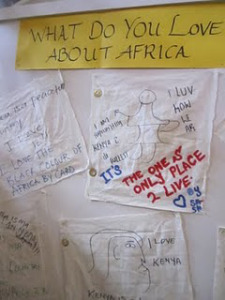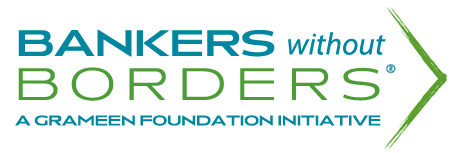Kim Kerry-Tyerman is a volunteer for Grameen Foundation’s Bankers without Borders® initiative who was based in Ghana and Kenya for eight weeks to help the BwB team develop relationships with local organizations (companies, associations, microfinance clubs and institutions of higher education) there. She recently posted a blog about her experience working in Kenya; an excerpt from that post is below, with a link to the full post. If you’d like to read her first two postings about her BwB experience in Ghana, you can read Part 1 and Part 2. Many find it difficult not to be condescending about Africa. Some might argue that referring to 54 diverse countries with thousands of cultures as “Africa” alone is demeaning, and yet it happens every day (just look at my blog address). Footage of kids with big bellies and stories of corruption seem to be the only stories to travel across the ocean, and they are typically only salvaged by some agency telling the world not to worry, they’re working on it. No, I am not immune. I’ve been known to lament the inefficiency of “Africa” while sitting in Nairobi’s unbearable congestion or one of Accra’s power outages. At the same time, I feel fortunate to tell a story that I hope will travel across these borders and demonstrate that “Africa” is indeed a place of innovation and hope.

Exhibit at the National Museum in Nairobi.
Nairobi is one of the continent’s star children: the one who may place third in the spelling bee but won’t mind because she has a good shot at winning the science fair competition. The region serves as a lab for innovative ideas, and the microfinance sector here is a great example. Like Ghana, each MFI in this region has varying models of delivery and a unique portfolio of products. Unlike Ghana, every MFI in this region has a website. Is this a key indicator of success? Surely not, but it indicates that microfinance is a visible and competitive industry here. Microfinance institutions here are not asking “what can we do?”, but “how can we do more?” For them, it’s not just about lending money. It’s about finding ways for that money to create things that generate a larger return for the community. Two trends have emerged here to ensure that microfinance is doing just that: mobile services and partnerships. >> Read Kim's full blog post

